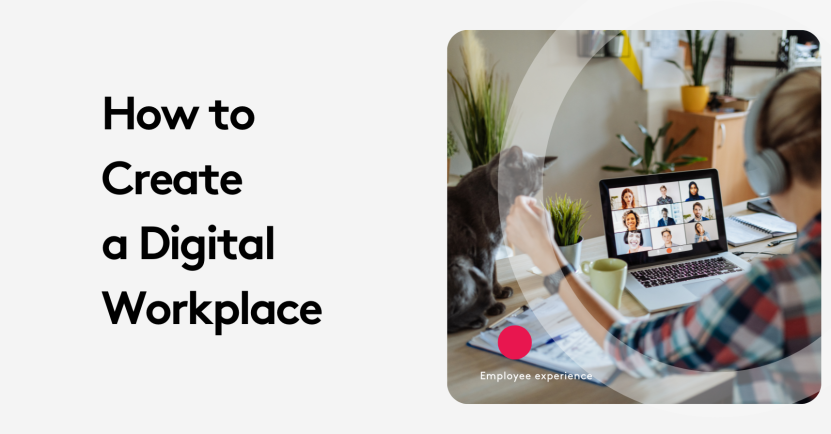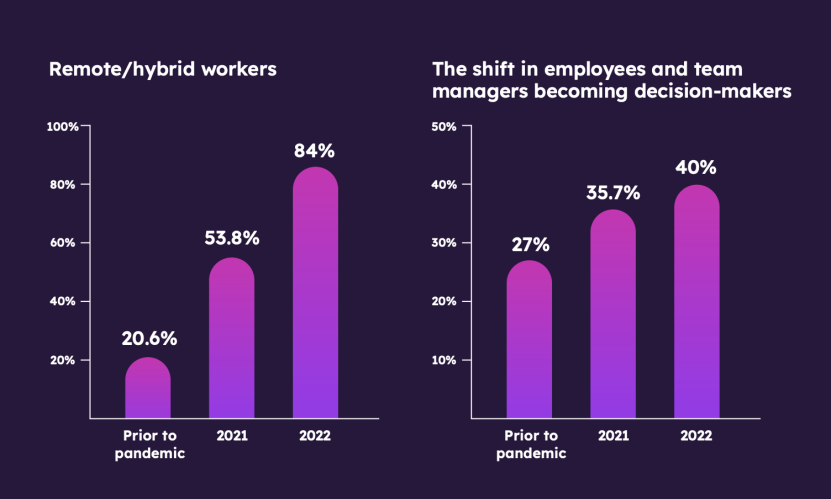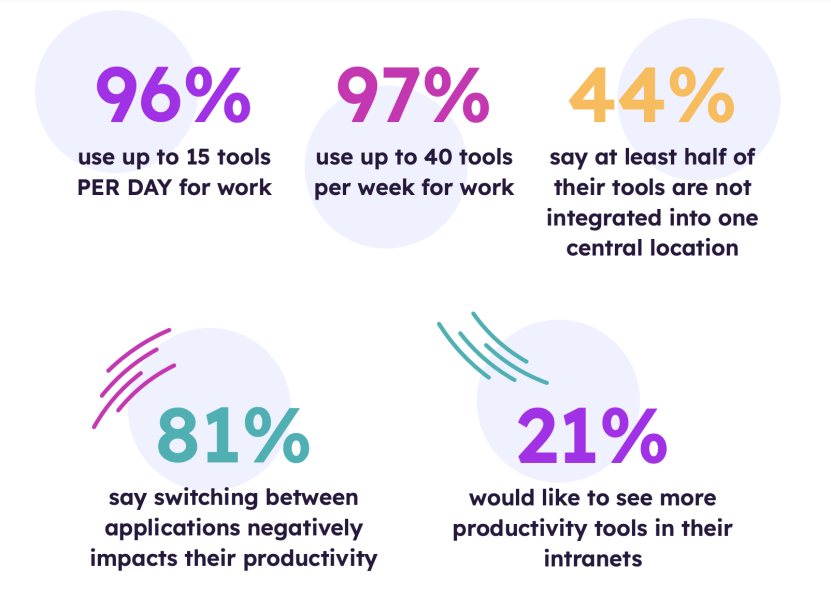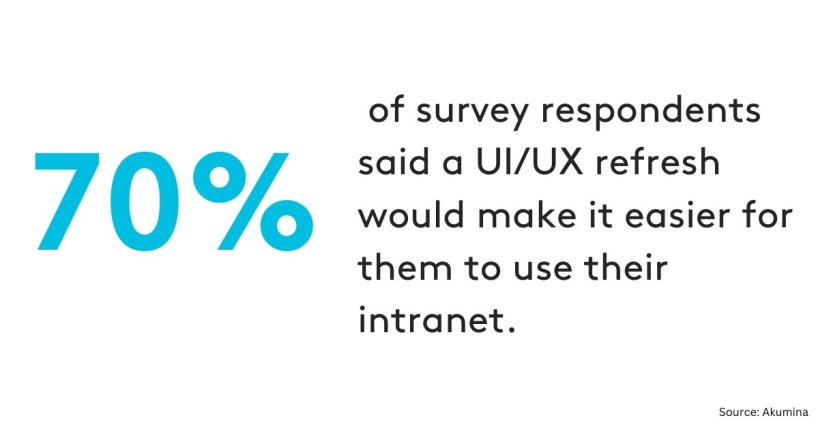How to Create a Digital Workplace that Inspires

The workplace has changed and technology has transformed how teams connect, collaborate, and innovate. Many HR team now face the challenge of how to create a digital workplace that is engaging, personal and empowering.
With remote-only companies embracing the work from anywhere mentality, they are a successful example of how to create a digital workspace that not only keeps them competitive but also empowers their employees to thrive.
A robust digital workplace provides a seamless ecosystem of platforms where employees can learn new skills, work more productively, and deliver innovative solutions for your customers.
By embracing digital tools, organizations can foster a culture of collaboration, boost engagement, and ensure their teams are equipped to succeed in a rapidly changing world—all while driving measurable business outcomes.
Key takeaways
- A digital workplace requires collaboration, innovation, and engagement.
- Employers should provide the training and resources to help employees develop vital digital skills.
- Using innovative technologies to automate mundane tasks allows employees to focus on more productive activities.
- Establishing digital policies and protocols ensures employees use digital tools securely
On this page:
How to Create a Digital Workplace that Empowers Employees and Boost Productivity
Think of the digital workplace as an ecosystem made up of the tools and technologies that enable organizations to collaborate and communicate more effectively.
These platforms not only allow us to provide better customer service, but they remove the mundane tasks that can cause employees to become disengaged. Even the most traditional workplaces are embracing digital transformation by adopting cloud-based applications, artificial intelligence, automation, and virtual reality.
One technology that sits at the heart of a digital workplace strategy is the content management system (CMS). A CMS is essential to building an employee intranet that would be the heart of a digital work culture.
As more employees work remotely, businesses are required to offer a platform where employees can find information that concerns them: company news, health benefits, retirement plans, contracts, performance reviews etc..
Gartner has reported that over 90% of businesses are engaged in some form of digital initiative, highlighting just how big a priority the digital workplace is today.
And, while they can be expensive to implement at first, digital tools are proven to reduce costs and enhance productivity.

Companies creating this sort of culture are attractive to employees, making it easier to hire and retain great talent. Employees are always looking to upskill, and are likelier to stay with a company that provides them with resources and opportunities to develop their digital capabilities.
Central to building a digital workplace is an intranet, a private, secure network that enables employees to access internal resources, collaborate, and communicate with each other.
A well-designed intranet works as a knowledge sharing platform and helps establish a unified digital workplace where employees can access and share content quickly and easily.
81% of employees state that switching between applications negatively impacts their productivity, highlighting just how valuable a CMS can be.
Content management platforms such as Core dna can serve as a stand-alone intranet. It provides organizations with a single digital space to manage all content, collaborate on documents, and create a secure environment for content storage.
CMSs serve as excellent intranets for the following reasons:
- User experience (UX): CMSs are designed to be intuitive and make it easy for employees to manage their documents.
- Collaboration and productivity: Employees can share and work together on company documents via the centralized CMS platform. It can also serve as a platform for creating and publishing webpages and other digital content, such as news and announcements.
- Security: CMSs have strict safety standards that make it easy to store and manage documents. Access to this content can be restricted to employees only, making it a safe intranet environment.
Customized intranets usually require a specialized team of IT specialists to maintain them. Regular users would only be able to modify the content after they had received authorization and training. For this reason, many companies choose the more flexible and agile CMS-based intranet for their employees.
Selecting your tools
96% of workers use up to 15 tools every day for work! Considering how disruptive that can be to their productivity, you want to find a platform that meets as many of their needs as possible.
It’s essential to hear directly from your employees to determine what they need from technology. Building digital workplace if about increasing your employee satisfaction at work which will positively impact your customer experience.
Below is our quick step-by-step instruction to help you determine what technology your teams need and what solutions to choose.
- Assess your current processes and determine which areas can be improved with technology.
- Research the digital tools and services and identify those that meet your needs.
- Consider the cost of implementation and maintenance for each tool.
- Evaluate whether your team can easily adopt the tool.
- Assess the security features of the tool.
- Consider the scalability to ensure it can accommodate your organization as it grows.
- Analyze the data the tool can provide and determine whether it can help improve processes.
- Test the tool with a small group of users to get feedback and ensure it meets expectations.

Prioritzing usability
The user experience should be prioritized when creating a digital workplace that employees feel empowered using. It is not just customer-facing websites and applications that should have a great UX but employees too.
As companies continue to transition to a digital format, it is likely that employees will expect a smooth experience. The intranet should be the core portal for employees to use to access the digital workplace.
Therefore, it is essential to keep the intranet up to date with new content, integrations, and applications to ensure the organization remains connected. This is especially important as remote working becomes more and more popular.
At its core, your intranet’s user interface should be user-friendly and easy to navigate, allowing employees to quickly and easily access the information and resources they need.
User experience (UX) is essential to create an enjoyable and efficient work environment. According to a survey from Akumina, nearly 70% of survey respondents said a UI/UX refresh would make it easier for them to use their intranet.

An effective user experience (UX) design in the workplace is crucial for reducing employee stress and frustration, enhancing productivity, and fostering a deeper connection to their tasks.
A well-crafted UX also streamlines team communication and simplifies access to essential information, contributing to a more efficient work environment.
Modern employees seek intuitive and efficient platforms to facilitate their work. Leading global companies have recognized the importance of prioritizing digital work environments to enhance employee experience and operational efficiency:
Notion
The US-based digital workspace platform with over 100 million global users, is focusing on reducing inefficiencies and boosting productivity, particularly in the APAC region.
By consolidating multiple software tools into a single, flexible platform, Notion aims to address the significant productivity loss due to inefficient work processes. Andrew McCarthy, Notion’s head for ANZ, SEA, and India, emphasizes the need to rethink end-to-end workflows using AI to unlock more productivity.
Johnson & Johnson
J&J has implemented mandatory generative AI training for over 56,000 employees to enhance AI literacy and integrate advanced technologies into various aspects of their operations, including drug development and regulatory compliance. This initiative aims to improve productivity and foster a culture of technological fluency within the organization.
Cisco
Cisco recently announced a suite of new AI-powered tools designed to revolutionize business communication and collaboration. Key among these is the Webex AI Agent, offering self-service options that promise a 39% increase in customer satisfaction by efficiently handling common inquiries.
Additionally, Cisco introduced Agent Wellness tools to manage call center stress by scheduling breaks and adjusting workloads, aiming to enhance productivity and employee well-being.
These examples illustrate how innovative companies are leveraging digital transformation to create more engaging and efficient work environments, ultimately enhancing employee satisfaction and organizational performance.
A note on security
We can’t discuss building a digital work environment without leaving room to focus on security. Businesses store tremendous amounts of sensitive data from customers and employees. Data breaches and cyberattacks are everyday threats that can have serious implications for businesses, including reputation damage, financial losses, and the threat of legal action.
Most cyber-attacks are aimed at small and medium businesses, but the number of security breaches in enterprises is rising. There was an increase in attacks on enterprises of over 27% in 2021. Implementing security measures such as authentication, encryption, access control, and patch management is essential for keeping businesses online.
- The value of the VPN
A virtual private network (VPN) allows users to securely access your organization’s private internal network remotely from anywhere in the world. As more organizations increase their remote workforce, this is hugely important to make that devices connecting to your network do so from a secure connection. VPNs make it possible to protect data by ensuring only the appropriate personnel can access the network. Moreover, a VPN can help organizations protect the privacy of their staff and customers, as well as safeguard their internal data.
- Staying secure with SSL
The other fundamental part of your cybersecurity initiatives is SSL (Secure Sockets Layer) encryption, a technology that encrypts data sent over the internet. SSL protects sensitive data from being intercepted and read by unauthorized parties. Data such as login credentials, customer data, and financial records can devastate your company when accessed by malicious actors.
Building a digital work environment can help keep your business competitive amidst today's digitization and globalizing landscape. Take advantage of the latest technologies to streamline processes, improve productivity, and increase employee engagement while creating a more flexible and collaborative environment.
Applications of AI in Intranets and Digital Workplaces
Artificial intelligence (AI) is rapidly transforming the intranet and digital workplace landscape by significantly enhancing productivity, communication, and employee satisfaction. Here are several key ways AI can elevate workplace digital experiences:
Enhanced Employee Productivity
AI-driven tools automate routine tasks, such as scheduling meetings, document management, and email prioritization, freeing employees to focus on higher-value activities. AI-powered intranets can offer personalized dashboards that display relevant information and actionable insights tailored to each employee’s role and preferences.
Intelligent Search and Information Management
Integrating AI with intranet platforms enables advanced search capabilities, ensuring employees can quickly locate critical documents or resources. AI-enhanced search engines use natural language processing (NLP) to understand context and intent, significantly reducing the time employees spend searching for information.
Improved Collaboration and Communication
AI-powered virtual assistants and chatbots integrated within digital workplace platforms can facilitate seamless communication by automating responses to frequently asked questions and directing employees to appropriate resources. Additionally, AI-driven language translation and sentiment analysis tools help bridge communication gaps across diverse teams, fostering a more inclusive workplace.
Employee Engagement and Well-being
AI analytics can identify patterns indicating employee burnout or dissatisfaction, prompting proactive interventions from management or HR. By providing personalized recommendations on workload management or breaks, AI helps maintain employee well-being and engagement.
Advanced Analytics and Insights
AI-driven analytics tools integrated into intranets help organizations gain deeper insights into employee interactions, content effectiveness, and overall platform usage. This data informs strategic decisions around content development, UX improvements, and resource allocation, resulting in a more efficient and effective digital workplace.
By strategically deploying AI in intranet and digital workplace environments, organizations can foster a more productive, engaged, and agile workforce, ultimately leading to sustained business success.






